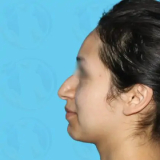
From post-pregnancy laxity to extra weight in the midsection, both women and men in the United States choose to undergo plastic surgery to improve the appearance of their midsection. Despite the growing popularity of minimally invasive body-focused procedures to address this area, there does not appear to be a corresponding decrease in patient interest in abdominoplasty (tummy tucks) – in fact, ASPS statistics show that since 2000, the number of tummy tuck operations performed has more than doubled.
Many patients who look to have a sleeker, smoother abdomen often ask whether a tummy tuck or liposuction is the better choice for them. Only an in-person consultation with a board-certified plastic surgeon can truly confirm which procedure would best achieve your goals – and for this, there are key variables we assess to formulate an individualized surgical plan.
The three main factors you should be discussing with your surgeon during a consult about your abdomen are:
- Skin quality
- Muscle tightness or unity
- The presence of any excess, protruding fat
These can vary quite widely in patients depending on their genetics, age, diet and exercise and whether pregnancy and childbirth has occurred.
A tummy tuck may be performed if you have excess, lax skin and/or stretched-out muscles of the abdominal wall (the latter is sometimes referred to as an abdominal wall plication). While addressing the abdominal skin is strictly cosmetic, abdominal wall repair may sometimes also be performed for functional improvement.
Tightening the abdominal wall
After experiencing massive weight loss or pregnancy and childbirth, previously firm and centralized abdominal muscles can loosen and weaken, sometimes to the point where they separate from each other. This is known as diastasis recti. Even the most intense, ab-focused workouts cannot restore their position. Diastasis recti can also occur in middle-aged and older men, especially those with abdominal obesity.
When the muscles in the abdominal wall separate, the vital organs in the area only have a thin band of connective tissue holding them in position. Besides contributing to a bulging appearance of the abdomen, diastasis recti compromises muscular support to result in day-to-day issues such as lower back pain, constipation, urinary leaking or incontinence, and even difficulties in simple functions such as breathing and/or moving about normally.
A standard or complete tummy tuck can provide the opportunity for the sort of muscle tightening required to strengthen the abdominal wall, as well as to remove redundant skin and tighten the rest. Liposuction is an appropriate procedure for patients who would like to address excess abdominal fat or other such localized fat pockets on the body. Because it cannot address excess skin or lax muscle, patients must have appropriate muscle tone and skin elasticity to maintain the appearance of newly shaped contours. Liposuction is not a weight loss procedure.
Using liposuction with a tummy tuck
For patients who would like to address skin laxity and/or muscle separation along with excess fat in the abdominal region, both tummy tuck and liposuction procedures may be required. Plastic surgeons must evaluate on a case-by-case basis whether the two procedures may be performed simultaneously, or separately in stages.
In younger, healthy patients, a simultaneous operation may be possible and will minimize overall healing time, but for many others, the staged approach may be more prudent to reduce the extent of surgical trauma and bleeding. The order in which the procedures are performed – or if only a single procedure is selected – is dependent on the patient’s physical traits and the aesthetic goals they wish to achieve.
Three things you should consider
If you are a prospective patient who would like to improve the appearance of their midsection, there are three things you must bear in mind. First, you must ensure you consult with a plastic surgeon who is certified by the American Board of Plastic Surgery and has extensive experience in both procedures with successful results. Second, based on their assessment, you must be open to the possibility that your surgeon may recommend a different course of action than the one you may have in mind. Finally, you must be committed to following all post-surgical instructions, including maintaining a long-term healthy diet and exercise regimen to sustain your results.







